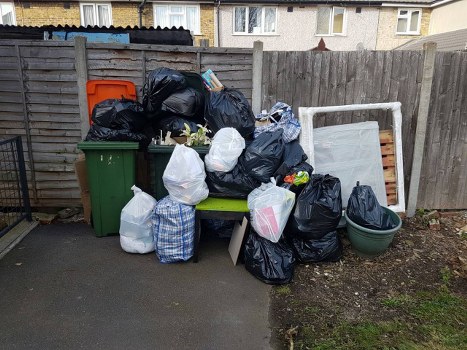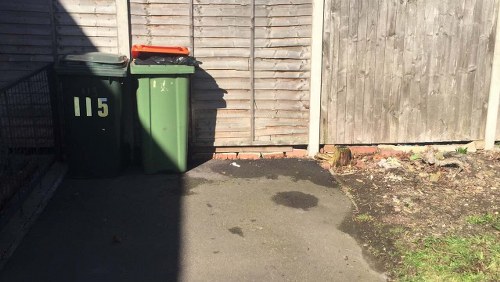Builders Waste NORTH LONDON

Builders waste in North London is a major topic for both construction industry professionals and local residents. In this bustling part of the capital, the proper management and disposal of construction debris is essential for maintaining the health of our communities and the environment. Over the years, increased urban development has led to higher amounts of waste, making recycling and sustainable practices more important than ever.
The concept of builders waste covers a wide range of materials including concrete, timber, bricks, metals, and other debris generated from construction and demolition sites. It is vital to manage these wastes responsibly to avoid unwanted environmental effects. Businesses and local authorities have taken considerable steps to streamline waste management practices while maintaining strict standards.
Many contractors and homeowners alike have begun to notice the benefits of responsible waste management. A careful approach not only reduces landfill use but also lowers the carbon footprint associated with recycling and reusing materials. This article will explore the importance of effective builders waste management in North London, discussion on local impact, and several tips for minimizing waste.
Understanding Builders Waste

What Exactly is Builders Waste? Builders waste, sometimes referred to as construction or demolition waste, is generated during various building projects. It includes items like leftover building materials, rubble, and other debris that often needs to be recycled or disposed of safely. Proper handling of these materials is crucial to ensure that hazardous substances do not harm local ecosystems.
When construction companies operate in North London, they must adhere to strict local environmental policies and health & safety guidelines. The waste generated is not only a challenge for waste management teams but can also cause health hazards if not properly managed. Ensuring that the waste is sorted correctly and processed contributes significantly to keeping our cities safe and clean.
Many local programs have been initiated to educate builders and the public about the benefits of separating recyclable materials from hazardous ones. This method of recycling is especially important in a densely populated urban area like North London, where space is limited and environmental risks are high.
Effective Methods for Builders Waste Management

When it comes to managing builders waste, a variety of strategies can be implemented. One of the most effective methods is segregation at the source. Contractors are now encouraged to sort waste during the demolition or construction process which aids in quicker recycling and reduces disposal costs significantly. This method helps avoid contamination between different materials, making recycling a lot more efficient.
In addition, North London has invested in facilities that support innovative recycling methods for construction debris. Many of these services include on-site collection and processing centers that ensure materials are reused whenever possible. The environmentally friendly techniques help in reducing the overall amount of material that winds up in landfills.
Recycling centers across the city also provide advice for reducing waste. They advocate techniques such as reusing materials, refurbishing old construction components, and buying recycled goods. As a result, not only is the natural environment protected, but local businesses are often able to gain a competitive edge by adopting these sustainable practices.
Local Relevance and Nearby Areas in North London

The North London area covers a broad and culturally diverse region where builders waste management takes on an important local dimension. Working with local councils and organizations, construction companies identify and implement waste management strategies that address the unique challenges of urban development.
Builders waste in North London doesn’t merely affect the immediate construction site; its effects ripple outwards and influence the quality of life in surrounding areas. This is why it is critical to have waste disposal systems that are not only efficient but also adherent to environmental and planning regulations. In addition to cutting down on harmful practices, these systems create job opportunities and boost local economies.
Below is an unordered list highlighting some of the nearby areas and their connections to our waste management efforts:
- Camden – Known for its vibrant culture, Camden benefits from reduced urban clutter due to active waste management programs.
- Islington – With dense residential zones, proper disposal of builders waste helps maintain the high living standards expected in this community.
- Hackney – Local authorities in Hackney are engaged in recycling projects that coincide with North London efforts.
- Haringey – This area supports waste reduction campaigns that aim to reduce landfill usage.
- Brent – Builders waste management here helps preserve green spaces and community parks.
Tips and Strategies to Minimize Construction Dump

There are many strategies available to help reduce the environmental impact of builders waste. One critical tip is to plan ahead when embarking on any construction project. Proper planning involves estimating waste amounts, identifying recycling facilities in advance, and incorporating waste management steps in the project plan.
Another helpful strategy is to invest in reusable materials. Many modern building techniques now promote using sustainable and recycled materials. This approach not only saves money but also contributes to reducing the generation of new construction waste during renovation projects.
Conclusion
In summary, effective management of builders waste in North London is a shared responsibility among local authorities, contractors, and residents. Minimizing environmental impact should be at the forefront of each project. Embracing sustainable practices such as waste segregation, on-site recycling, and utilizing eco-friendly material alternatives are ways to ensure a healthier urban environment.The Future of North London’s Builders Waste Management
With continuous improvements in technology and increased public awareness, the future for builders waste management in North London looks promising. By adopting smart strategies, we can lower costs, create more sustainable communities, and ensure that our urban landscapes remain vibrant, clean, and safe. Below are a few frequently asked questions to help clarify common concerns related to this topic.Frequently Asked Questions
Q1: What is considered builders waste?
A: Builders waste includes any debris created during construction, renovation, or demolition. It can be concrete, bricks, timber, metals, or other materials that result from building projects.
Q2: Why is proper builders waste management important?
A: Proper management helps reduce landfill use, minimizes environmental pollution, and supports recycling efforts, ultimately leading to a greener and healthier community.
Q3: How can residents get involved in reducing builders waste?
A: Residents can support local recycling initiatives, opt for eco-friendly building materials, and encourage contractors to adopt waste segregation practices during projects.
Q4: What are some recycling practices used in North London?
A: North London promotes methods such as on-site sorting of debris, using local recycling centers, and repurposing construction waste for future building projects.
Q5: Are there any cost benefits associated with effective waste management?
A: Yes, effective waste management can reduce disposal fees, lower overall project costs, and may even qualify for environmental incentives offered by local councils.
